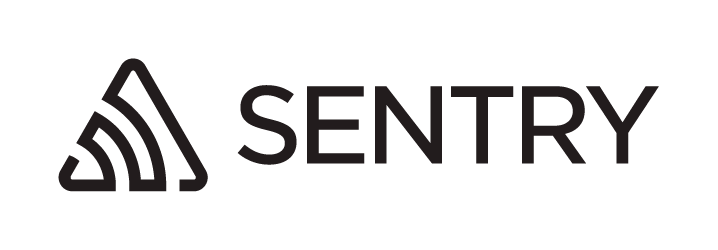Laravel integration for Sentry.
- Laravel
4.2.xis supported until version0.8.x(composer require "sentry/sentry-laravel:0.8.*") - Laravel
5.x.xis supported in the most recent version (composer require sentry/sentry-laravel)
Install the sentry/sentry-laravel package:
$ composer require sentry/sentry-laravelIf you're on Laravel 5.4 or earlier, you'll need to add the following to your config/app.php:
'providers' => array(
// ...
Sentry\SentryLaravel\SentryLaravelServiceProvider::class,
)
'aliases' => array(
// ...
'Sentry' => Sentry\SentryLaravel\SentryFacade::class,
)Add Sentry reporting to app/Exceptions/Handler.php:
public function report(Exception $exception)
{
if (app()->bound('sentry') && $this->shouldReport($exception)) {
app('sentry')->captureException($exception);
}
parent::report($exception);
}Create the Sentry configuration file (config/sentry.php):
$ php artisan vendor:publish --provider="Sentry\SentryLaravel\SentryLaravelServiceProvider"Add your DSN to .env:
SENTRY_LARAVEL_DSN=https://public:[email protected]/1
Note: If you use SENTRY_DSN in your .env it will overwrite the DSN value set in the config/sentry.php file.
Install the sentry/sentry-laravel package on version 0.8.* since it's the last version to support Laravel 4:
$ composer require "sentry/sentry-laravel:0.8.*"Add the Sentry service provider and facade in config/app.php:
'providers' => array(
// ...
'Sentry\SentryLaravel\SentryLaravelServiceProvider',
)
'aliases' => array(
// ...
'Sentry' => 'Sentry\SentryLaravel\SentryFacade',
)Create the Sentry configuration file (config/sentry.php):
$ php artisan config:publish sentry/sentry-laravelInstall the sentry/sentry-laravel package:
$ composer require sentry/sentry-laravelRegister Sentry in bootstrap/app.php:
$app->register('Sentry\SentryLaravel\SentryLumenServiceProvider');
# Sentry must be registered before routes are included
require __DIR__ . '/../app/Http/routes.php';Add Sentry reporting to app/Exceptions/Handler.php:
public function report(Exception $e)
{
if (app()->bound('sentry') && $this->shouldReport($e)) {
app('sentry')->captureException($e);
}
parent::report($e);
}Create the Sentry configuration file (config/sentry.php):
<?php
return array(
'dsn' => '___DSN___',
// capture release as git sha
// 'release' => trim(exec('git log --pretty="%h" -n1 HEAD')),
// Capture bindings on SQL queries
'breadcrumbs.sql_bindings' => true,
// Capture default user context
'user_context' => false,
);You can test your configuration using the provided artisan command:
$ php artisan sentry:test
[sentry] Client configuration:
-> server: https://app.getsentry.com/api/3235/store/
-> project: 3235
-> public_key: e9ebbd88548a441288393c457ec90441
-> secret_key: 399aaee02d454e2ca91351f29bdc3a07
[sentry] Generating test event
[sentry] Sending test event with ID: 5256614438cf4e0798dc9688e9545d94The mechanism to add context will vary depending on which version of Laravel you're using, but the general approach is the same. Find a good entry point to your application in which the context you want to add is available, ideally early in the process.
In the following example, we'll use a middleware:
namespace App\Http\Middleware;
use Closure;
class SentryContext
{
/**
* Handle an incoming request.
*
* @param \Illuminate\Http\Request $request
* @param \Closure $next
*
* @return mixed
*/
public function handle($request, Closure $next)
{
if (app()->bound('sentry')) {
/** @var \Raven_Client $sentry */
$sentry = app('sentry');
// Add user context
if (auth()->check()) {
$sentry->user_context([...]);
} else {
$sentry->user_context(['id' => null]);
}
// Add tags context
$sentry->tags_context([...]);
}
return $next($request);
}
}When something goes wrong and you get a customer email in your inbox it would be nice if they could give you some kind of identitifier for the error they are seeing.
Luckily Sentry provides you with just that by adding one of the following options to your error view.
// Using the Sentry facade
$errorID = Sentry::getLastEventID();
// Or without the Sentry facade (Lumen)
$errorID = app('sentry')->getLastEventID();This could look something like this in for example your resources/views/error/500.blade.php:
@if(!empty(Sentry::getLastEventID()))
<p>Please send this ID with your support request: {{ Sentry::getLastEventID() }}.</p>
@endifThis ID can be searched for in the Sentry interface allowing you to find the error quickly.
To configure Sentry as a log channel add the following config to the channels section in config/logging.php:
'channels' => [
// ...
'sentry' => [
'driver' => 'sentry',
],
],After you configured the Sentry log channel you can configure your app to both log to a log file and to Sentry by modifiying the log stack:
'channels' => [
'stack' => [
'driver' => 'stack',
// Add the Sentry log channel to the stack
'channels' => ['single', 'sentry'],
],
//...
],Optionally you can set the logging level and if events should bubble on the driver:
'channels' => [
// ...
'sentry' => [
'driver' => 'sentry',
'level' => null, // The minimum monolog logging level at which this handler will be triggered
// For example: `\Monolog\Logger::ERROR`
'bubble' => true, // Whether the messages that are handled can bubble up the stack or not
],
],If you have multiple log channels you would like to filter on inside the Sentry interface you can add the name attribute to the log channel,
it will show up in Sentry as the logger tag which is filterable.
For example:
'channels' => [
'my_stacked_channel' => [
'driver' => 'stack',
'channels' => ['single', 'sentry'],
'name' => 'my-channel'
],
//...
],You're now able to log errors to your channel:
\Log::channel('my_stacked_channel')->error('My error');And sentry's logger tag has now the channel's name "my-channel" value where you can filter on.
To resolve this you will need to create your own service provider extending ours so we can prevent naming conflicts.
<?php
namespace App\Support;
class SentryLaravelServiceProvider extends \Sentry\SentryLaravel\SentryLaravelServiceProvider
{
public static $abstract = 'sentry-laravel';
}You can then add this service provider to the config/app.php.
'providers' => array(
// ...
App\Support\SentryLaravelServiceProvider::class,
)Optionally if you want to use the facade you also need to extend / create a new facade.
<?php
namespace App\Support;
class SentryLaravelFacade extends \Sentry\SentryLaravel\SentryFacade
{
protected static function getFacadeAccessor()
{
return 'sentry-laravel';
}
}And add that facade to your config/app.php.
'aliases' => array(
// ...
'SentryLaravel' => App\Support\SentryLaravelFacade::class,
)After you added your own service provider, running php artisan vendor:publish --provider="App\Support\SentryLaravelServiceProvider" publishes the Sentry config file to your chosen name (in the example above config/sentry-laravel.php) preventing conflicts with a config/sentry.php config file that might be used by the other package.
If you followed the regular installation instructions above (you should), make sure you replace app('sentry') with app('sentry-laravel').
The namespace \App\Support can be anything you want in the examples above.
Note: If you are on Laravel 5.5+ the Sentry package is probably auto discovered by Laravel, to solve this add or append to the extra section in your composer.json file and run composer update/install afterwards:
"extra": {
"laravel": {
"dont-discover": ["sentry/sentry-laravel"]
}
}Dependencies are managed through composer:
$ composer install
Tests can then be run via phpunit:
$ vendor/bin/phpunit
- Bug Tracker
- Code
- Mailing List
- IRC (irc.freenode.net, #sentry)





